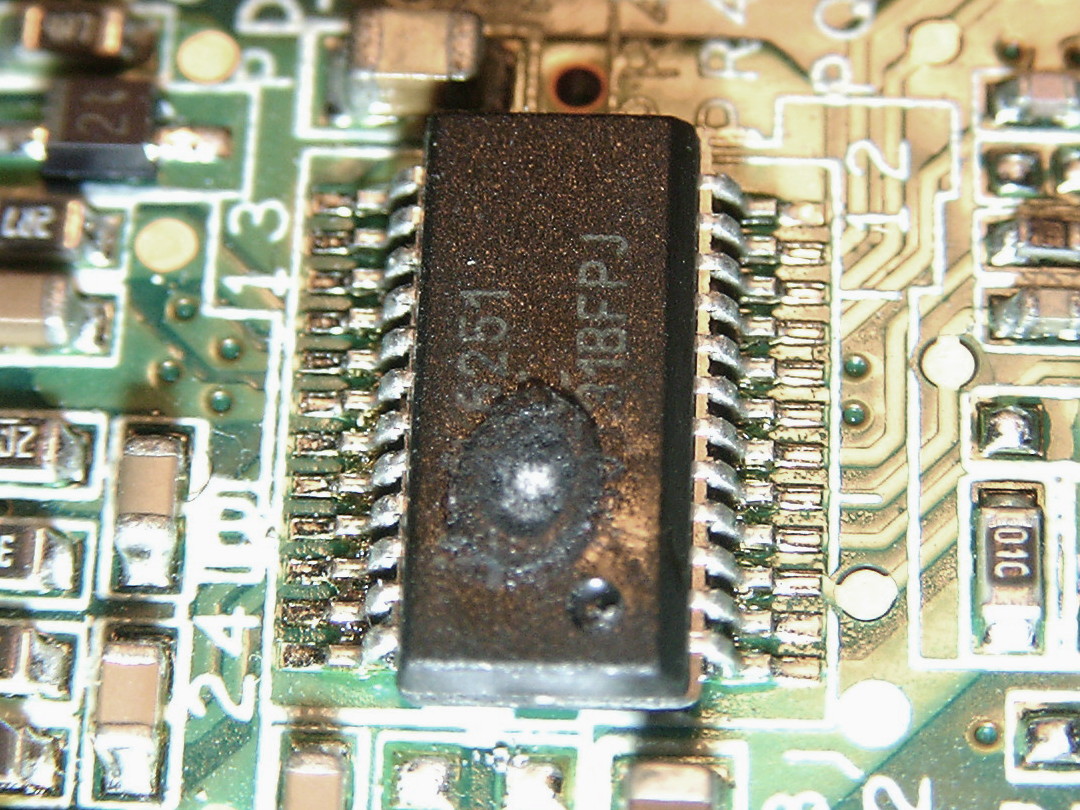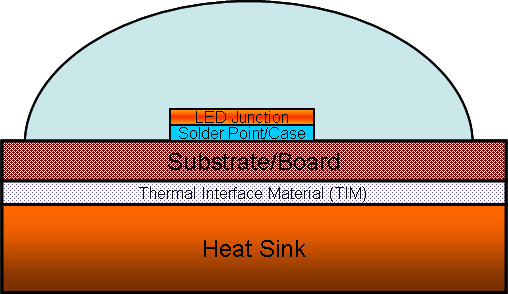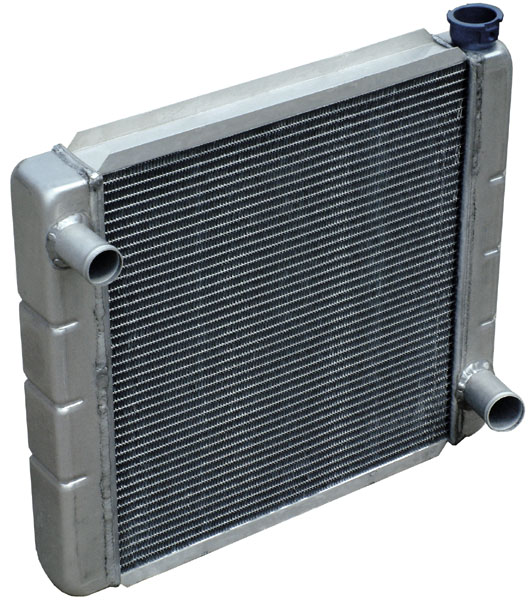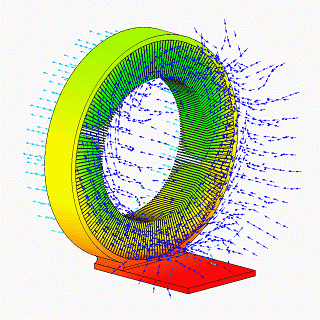|
Overheating (electricity)
Overheating is a phenomenon of rising temperatures in an electrical circuit. Overheating causes damage to the circuit components and can cause fire, explosion, and injury. Damage caused by overheating is usually irreversible; the only way to repair it is to replace some components. Causes When overheating, the temperature of the part rises above the operating temperature. Overheating can take place: * if heat is produced in more than expected amount (such as in cases of short-circuits, or applying more voltage than rated), or * if heat dissipation is poor, so that normally produced waste heat does not drain away properly. Overheating may be caused from any accidental fault of the circuit (such as short-circuit or spark-gap), or may be caused from a wrong design or manufacture (such as the lack of a proper heat dissipation system). Due to accumulation of heat, the system reaches an equilibrium of heat accumulation vs. dissipation at a much higher temperature than expected. Preventi ... [...More Info...] [...Related Items...] OR: [Wikipedia] [Google] [Baidu] |
Electrical Circuit
An electrical network is an interconnection of electrical components (e.g., battery (electricity), batteries, resistors, inductors, capacitors, switches, transistors) or a model of such an interconnection, consisting of electrical elements (e.g., voltage sources, current sources, Electrical resistance and conductance, resistances, inductances, capacitances). An electrical circuit is a network consisting of a closed loop, giving a return path for the current. Thus all circuits are networks, but not all networks are circuits (although networks without a closed loop are often referred to as "open circuits"). A resistive network is a network containing only resistors and ideal current and voltage sources. Network analysis (electrical circuits), Analysis of resistive networks is less complicated than analysis of networks containing capacitors and inductors. If the sources are constant (Direct current, DC) sources, the result is a DC network. The effective resistance and current dist ... [...More Info...] [...Related Items...] OR: [Wikipedia] [Google] [Baidu] |
Active Cooling
Active cooling is a heat-reducing mechanism that is typically implemented in electronic devices and indoor buildings to ensure proper heat transfer and circulation from within. Unlike its counterpart passive cooling, active cooling is entirely dependent on energy consumption in order to operate. It uses various mechanical systems that consume energy to dissipate heat. It is commonly implemented in systems that are unable to maintain their temperature through passive means. Active cooling systems are usually powered through the use of electricity or thermal energy but it's possible for some systems to be powered by solar energy or even hydroelectric energy. They need to be well-maintained and sustainable in order for them to perform its necessary tasks or the possibility of damages within objects could occur. Various applications of commercial active cooling systems include indoor air conditioners, computer fans, and heat pumps. Building usage Many buildings require high demands ... [...More Info...] [...Related Items...] OR: [Wikipedia] [Google] [Baidu] |
Thermal Management Of High-power LEDs
Light-emitting diode#High-power, High power light-emitting diodes (LEDs) can use 350 milliwatts or more in a single LED. Most of the electricity in an LED becomes heat rather than light – about 70% heat and 30% light. If this heat is not removed, the LEDs run at high temperatures, which not only lowers their efficiency, but also makes the LED less Reliability engineering, reliable, shortens its lifespan. Thus, thermal management of high power LEDs is a crucial area of the research and development. Limiting both the junction and the phosphor particles temperatures to a low value is required, which will guarantee desired LED lifetime. Thermal management (electronics), Thermal management is a universal problem having to do with power density, which occurs both at higher powers or in smaller devices. Many lighting applications wish to combine a high light flux with an extremely small light emitting substrate, causing concerns with LED power management to be particularly acute ... [...More Info...] [...Related Items...] OR: [Wikipedia] [Google] [Baidu] |
Thermal Management Of Electronic Devices And Systems
All electronic devices and circuitry generate excess heat and thus require thermal management to improve reliability and prevent premature failure. The amount of heat output is equal to the power input, if there are no other energy interactions. There are several techniques for cooling including various styles of heat sinks, thermoelectric coolers, forced air systems and fans, heat pipes, and others. In cases of extreme low environmental temperatures, it may actually be necessary to heat the electronic components to achieve satisfactory operation. Overview Thermal resistance of devices This is usually quoted as the thermal resistance from junction to case of the semiconductor device. The units are °C/W. For example, a heatsink rated at 10 °C/W will get 10 °C hotter than the surrounding air when it dissipates 1 Watt of heat. Thus, a heatsink with a low °C/W value is more efficient than a heatsink with a high °C/W value. Given two semiconductor d ... [...More Info...] [...Related Items...] OR: [Wikipedia] [Google] [Baidu] |
Radiator
A radiator is a heat exchanger used to transfer thermal energy from one medium to another for the purpose of cooling and heating. The majority of radiators are constructed to function in cars, buildings, and electronics. A radiator is always a source of heat to its environment, although this may be for either the purpose of #Heating, heating an environment, or for cooling the fluid or coolant supplied to it, as for automotive #Engine cooling, engine cooling and Heating, ventilation, and air conditioning, HVAC dry cooling towers. Despite the name, most radiators transfer the bulk of their heat via convection instead of thermal radiation. History The Roman hypocaust is an early example of a type of radiator for building space heating. Franz San Galli, a Prussia, Prussian-born Russian businessman living in St. Petersburg, is credited with inventing the heating radiator around 1855, having received a radiator patent in 1857, but American Joseph Nason and Scot Rory Gregor developed a ... [...More Info...] [...Related Items...] OR: [Wikipedia] [Google] [Baidu] |
Oil Cooling
Oil cooling is the use of engine oil as a coolant, typically to remove surplus heat from an internal combustion engine. The hot engine transfers heat to the oil which then usually passes through a heat-exchanger, typically a type of radiator known as an oil cooler. The cooled oil flows back into the hot object to cool it continuously. Usage Oil cooling is commonly used to cool high-performance motorcycle engines that are not liquid-cooled. Typically, the cylinder barrel remains air-cooled in the traditional motorcycle fashion, but the cylinder head benefits from additional cooling. As there is already an oil circulation system available for lubrication, this oil is also piped to the cylinder head and used as a liquid coolant. Compared to an oil system used solely for lubrication, oil cooling requires additional oil capacity, a greater flow rate through the oil pump, and an oil cooler (or a larger cooler than normal). If air-cooling proves sufficient for much of the running t ... [...More Info...] [...Related Items...] OR: [Wikipedia] [Google] [Baidu] |
Heat Spreader
A heat spreader transfers energy as heat from a hotter source to a colder heat sink or heat exchanger. There are two thermodynamic types, passive and active. The most common sort of passive heat spreader is a plate or block of material having high thermal conductivity, such as copper, aluminum, or diamond. An active heat spreader speeds up heat transfer with expenditure of energy as work supplied by an external source. A heat pipe uses fluids inside a sealed case. The fluids circulate either passively, by spontaneous convection, triggered when a threshold temperature difference occurs; or actively, because of an impeller driven by an external source of work. Without sealed circulation, energy can be carried by transfer of fluid matter, for example externally supplied colder air, driven by an external source of work, from a hotter body to another external body, though this is not exactly heat transfer as defined in physics. Exemplifying increase of entropy according to the se ... [...More Info...] [...Related Items...] OR: [Wikipedia] [Google] [Baidu] |
Heat Pump
A heat pump is a device that uses electricity to transfer heat from a colder place to a warmer place. Specifically, the heat pump transfers thermal energy using a heat pump and refrigeration cycle, cooling the cool space and warming the warm space. In winter a heat pump can move heat from the cool outdoors to warm a house; the pump may also be designed to move heat from the house to the warmer outdoors in summer. As they transfer heat rather than generating heat, they are more energy-efficient than heating by gas boiler. A gaseous refrigerant is compressed so its pressure and temperature rise. When operating as a heater in cold weather, the warmed gas flows to a heat exchanger in the indoor space where some of its thermal energy is transferred to that indoor space, causing the gas to condense into a liquid. The liquified refrigerant flows to a heat exchanger in the outdoor space where the pressure falls, the liquid evaporates and the temperature of the gas falls. It is no ... [...More Info...] [...Related Items...] OR: [Wikipedia] [Google] [Baidu] |
Heat Pipe
A heat pipe is a heat-transfer device that employs phase transition to transfer heat between two solid interfaces. At the hot interface of a heat pipe, a volatile liquid in contact with a thermally conductive solid surface turns into a vapor by absorbing heat from that surface. The vapor then travels along the heat pipe to the cold interface and condenses back into a liquid, releasing the latent heat. The liquid then returns to the hot interface through capillary action, centrifugal force, or gravity and the cycle repeats. Due to the very high heat transfer coefficients for boiling and condensation, heat pipes are highly effective thermal conductors. The effective thermal conductivity varies with heat pipe length and can approach for long heat pipes, in comparison with approximately for copper. Modern CPU heat pipes are typically made of copper and use water as the working fluid. They are common in many consumer electronics like desktops, laptops, tablets, and high-end smar ... [...More Info...] [...Related Items...] OR: [Wikipedia] [Google] [Baidu] |
Heat Exchanger
A heat exchanger is a system used to transfer heat between a source and a working fluid. Heat exchangers are used in both cooling and heating processes. The fluids may be separated by a solid wall to prevent mixing or they may be in direct contact. They are widely used in space heating, refrigeration, air conditioning, power stations, chemical plants, Petrochemical, petrochemical plants, Oil refinery, petroleum refineries, natural-gas processing, and sewage treatment. The classic example of a heat exchanger is found in an internal combustion engine in which a circulating fluid known as engine coolant flows through radiator coils and air flows past the coils, which cools the coolant and heats the incoming air. Another example is the heat sink, which is a passive heat exchanger that transfers the heat generated by an electronic or a mechanical device to a fluid medium, often air or a liquid coolant. Flow arrangement There are three primary classifications of heat exchangers accord ... [...More Info...] [...Related Items...] OR: [Wikipedia] [Google] [Baidu] |
Coolant
A coolant is a substance, typically liquid, that is used to reduce or regulate the temperature of a system. An ideal coolant has high thermal capacity, low viscosity, is low-cost, non-toxic, chemically inert and neither causes nor promotes corrosion of the cooling system. Some applications also require the coolant to be an electrical insulator. While the term "coolant" is commonly used in automotive and HVAC applications, in industrial processing heat-transfer fluid is one technical term more often used in high temperature as well as low-temperature manufacturing applications. The term also covers cutting fluids. Industrial cutting fluid has broadly been classified as water-soluble coolant and neat cutting fluid. Water-soluble coolant is oil in water emulsion. It has varying oil content from nil oil (synthetic coolant). This coolant can either keep its phase and stay liquid or gaseous, or can undergo a phase transition, with the latent heat adding to the cooling efficiency. ... [...More Info...] [...Related Items...] OR: [Wikipedia] [Google] [Baidu] |







